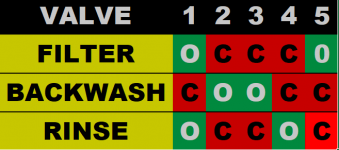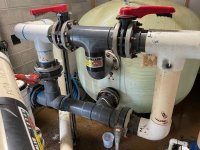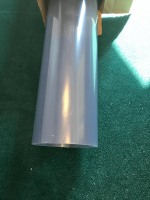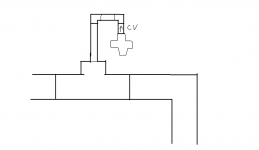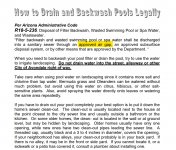
Per Arizona Administrative Code
R18-5-236. Disposal of Filter Backwash, Wasted Swimming Pool or Spa Water, and Wastewater.
“Filter backwash and wasted swimming pool or spa water shall be discharged into a sanitary sewer through an approved air gap, an approved subsurface disposal system, or by other means that are approved by the Department. “
_______________________________________________________________________________________________________________________________________
454.1.6.5.15 Pool Waste Water Disposal
2020 FBC - Building, 7th edition > 4 Special Detailed Requirements Based on Occupancy and Use > 454 Swimming Pools and Bathing Places (Public and Private) > 454.1 Public Swimming Pools and Bathing Places > 454.1.6 Plumbing Systems > 454.1.6.5 Recirculation and Treatment Systems > 454.1.6.5.15 Pool Waste Water Disposal
Pool waste water shall be discharged through an air gap; disposal shall be to sanitary sewers, storm sewers, drainfields, or by other means, in accordance with local requirements including obtaining all necessary permits.
Disposal of water from pools using D.E. powder shall be accomplished through separation tanks which are equipped with air bleed valves, bottom drain lines, and isolation valves, or through a settling tank with final disposal being acceptable to local authorities.
D.E. separator tanks shall have a capacity as rated by the manufacturer, equal to the square footage of the filter system. All lines shall be sized to handle the expected flow.
There shall not be a direct physical connection between any drain from a pool or recirculation system and a sewer line.
Explore a searchable database of US construction and building code. Code regulations are consolidated by state and city for easier navigation.

up.codes


